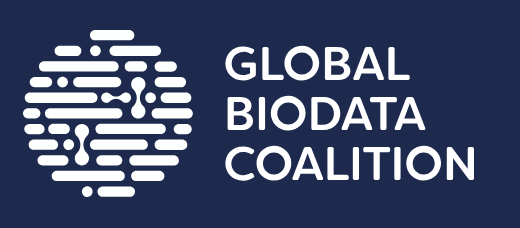The name of this superfamily has been modified since the most recent official CATH+ release (v4_4_0). At the point of the last release, this superfamily was named:
"Protein LEAFY
".
FunFam 1: Transcription factor floricaula/leafy
Please note: GO annotations are assigned to the full protein sequence rather than individual protein domains. Since a given protein can contain multiple domains, it is possible that some of the annotations below come from additional domains that occur in the same protein, but have been classified elsewhere in CATH.
There are 7 GO terms relating to "molecular function"
The search results have been sorted with the annotations that are found most frequently at the top of the
list. The results can be filtered by typing text into the search box at the top of the table.
| GO Term | Annotations | Evidence |
|---|---|---|
|
Protein binding GO:0005515
Interacting selectively and non-covalently with any protein or protein complex (a complex of two or more proteins that may include other nonprotein molecules).
|
7 | Q00958 (/IPI) Q00958 (/IPI) Q00958 (/IPI) Q0JAI1 (/IPI) Q0JAI1 (/IPI) Q0JAI1 (/IPI) Q0JAI1 (/IPI) |
|
DNA-binding transcription factor activity GO:0003700
A protein or a member of a complex that interacts selectively and non-covalently with a specific DNA sequence (sometimes referred to as a motif) within the regulatory region of a gene to modulate transcription. Regulatory regions include promoters (proximal and distal) and enhancers. Genes are transcriptional units, and include bacterial operons.
|
3 | Q00958 (/IDA) Q00958 (/IDA) Q00958 (/IDA) |
|
DNA-binding transcription factor activity GO:0003700
A protein or a member of a complex that interacts selectively and non-covalently with a specific DNA sequence (sometimes referred to as a motif) within the regulatory region of a gene to modulate transcription. Regulatory regions include promoters (proximal and distal) and enhancers. Genes are transcriptional units, and include bacterial operons.
|
3 | Q00958 (/TAS) Q00958 (/TAS) Q00958 (/TAS) |
|
Chromatin DNA binding GO:0031490
Interacting selectively and non-covalently with DNA that is assembled into chromatin.
|
3 | Q00958 (/IDA) Q00958 (/IDA) Q00958 (/IDA) |
|
Protein homodimerization activity GO:0042803
Interacting selectively and non-covalently with an identical protein to form a homodimer.
|
3 | Q00958 (/IDA) Q00958 (/IDA) Q00958 (/IDA) |
|
Sequence-specific DNA binding GO:0043565
Interacting selectively and non-covalently with DNA of a specific nucleotide composition, e.g. GC-rich DNA binding, or with a specific sequence motif or type of DNA e.g. promotor binding or rDNA binding.
|
3 | Q00958 (/IDA) Q00958 (/IDA) Q00958 (/IDA) |
|
Protein self-association GO:0043621
Interacting selectively and non-covalently with a domain within the same polypeptide.
|
3 | Q00958 (/IPI) Q00958 (/IPI) Q00958 (/IPI) |
There are 7 GO terms relating to "biological process"
The search results have been sorted with the annotations that are found most frequently at the top of the
list. The results can be filtered by typing text into the search box at the top of the table.
| GO Term | Annotations | Evidence |
|---|---|---|
|
Regulation of flower development GO:0009909
Any process that modulates the frequency, rate or extent of flower development.
|
4 | Q0JAI1 (/IMP) Q0JAI1 (/IMP) Q0JAI1 (/IMP) Q0JAI1 (/IMP) |
|
Maintenance of meristem identity GO:0010074
The process in which an organism retains a population of meristem cells, preventing the commitment of all stem cell progeny to a differentiated cell fate.
|
4 | Q0JAI1 (/IMP) Q0JAI1 (/IMP) Q0JAI1 (/IMP) Q0JAI1 (/IMP) |
|
Regulation of developmental vegetative growth GO:1905613
Any process that modulates the frequency, rate or extent of developmental vegetative growth.
|
4 | Q0JAI1 (/IMP) Q0JAI1 (/IMP) Q0JAI1 (/IMP) Q0JAI1 (/IMP) |
|
Gibberellic acid mediated signaling pathway GO:0009740
A series of molecular signals mediated by the detection of gibberellic acid.
|
3 | Q00958 (/TAS) Q00958 (/TAS) Q00958 (/TAS) |
|
Flower development GO:0009908
The process whose specific outcome is the progression of the flower over time, from its formation to the mature structure. The flower is the reproductive structure in a plant, and its development begins with the transition of the vegetative or inflorescence meristem into a floral meristem.
|
3 | Q00958 (/IMP) Q00958 (/IMP) Q00958 (/IMP) |
|
Maintenance of inflorescence meristem identity GO:0010077
The process in which an organism retains a population of inflorescence meristem cells, preventing the commitment of all stem cell progeny to a differentiated cell fate.
|
3 | Q00958 (/IGI) Q00958 (/IGI) Q00958 (/IGI) |
|
Floral meristem determinacy GO:0010582
The process in which a floral meristem becomes determinate (i.e. ceases to produce lateral organs and may or may not terminally differentiate).
|
3 | Q00958 (/IGI) Q00958 (/IGI) Q00958 (/IGI) |
There are 1 GO terms relating to "cellular component"
The search results have been sorted with the annotations that are found most frequently at the top of the
list. The results can be filtered by typing text into the search box at the top of the table.
| GO Term | Annotations | Evidence |
|---|---|---|
|
Nucleus GO:0005634
A membrane-bounded organelle of eukaryotic cells in which chromosomes are housed and replicated. In most cells, the nucleus contains all of the cell's chromosomes except the organellar chromosomes, and is the site of RNA synthesis and processing. In some species, or in specialized cell types, RNA metabolism or DNA replication may be absent.
|
3 | Q00958 (/TAS) Q00958 (/TAS) Q00958 (/TAS) |
